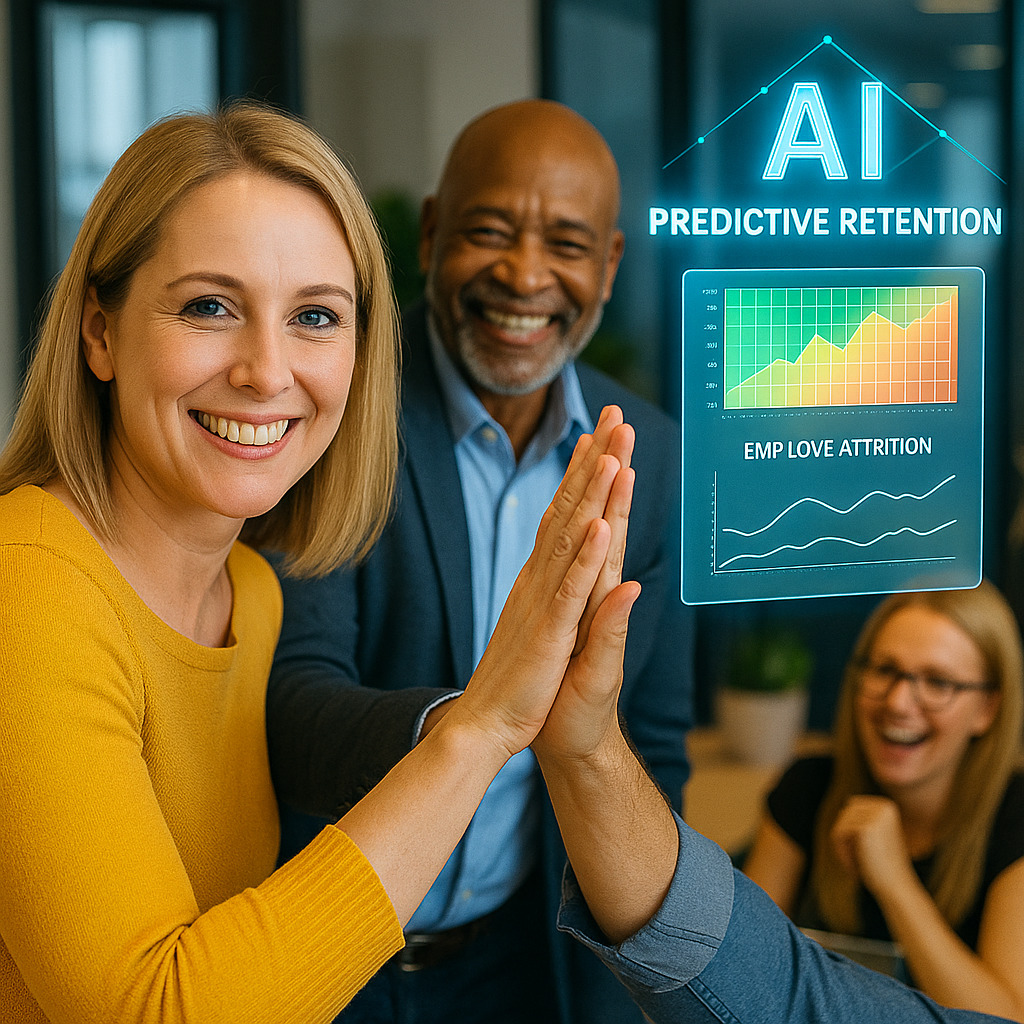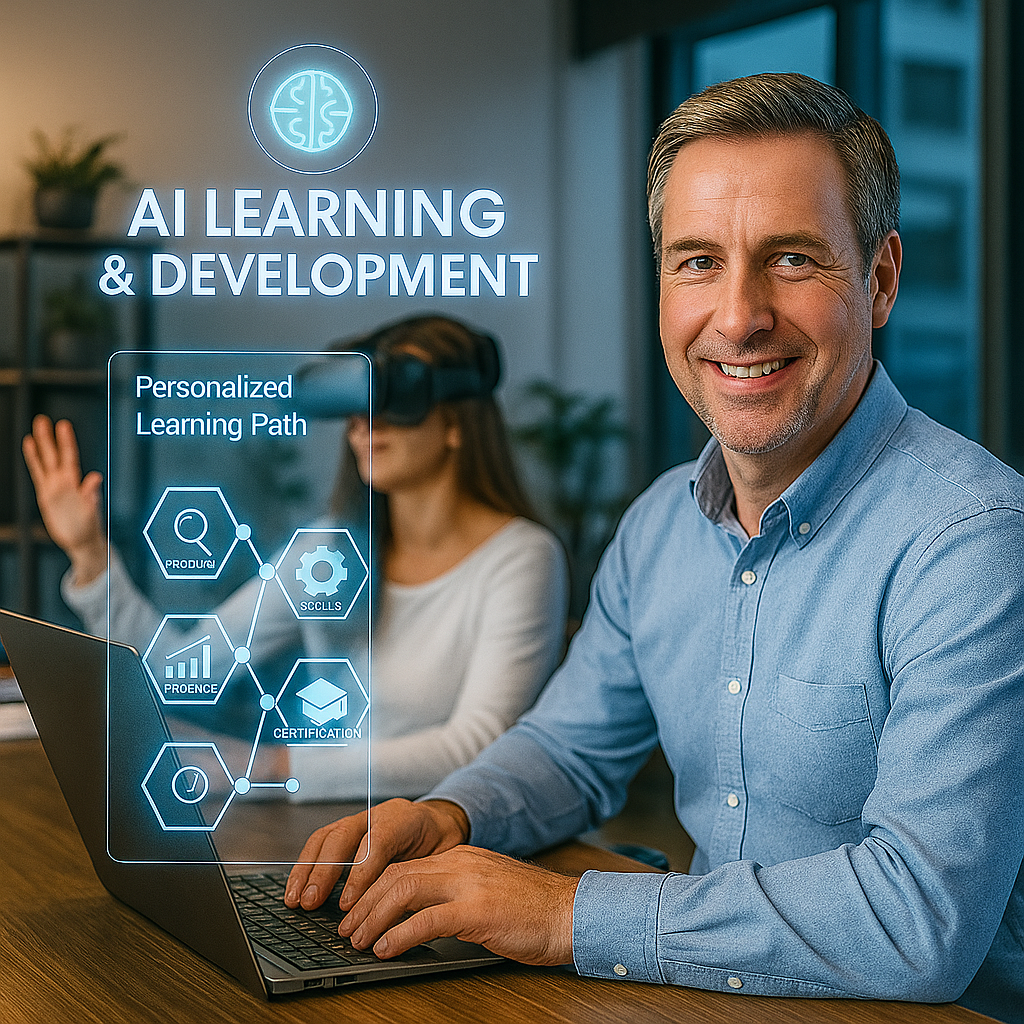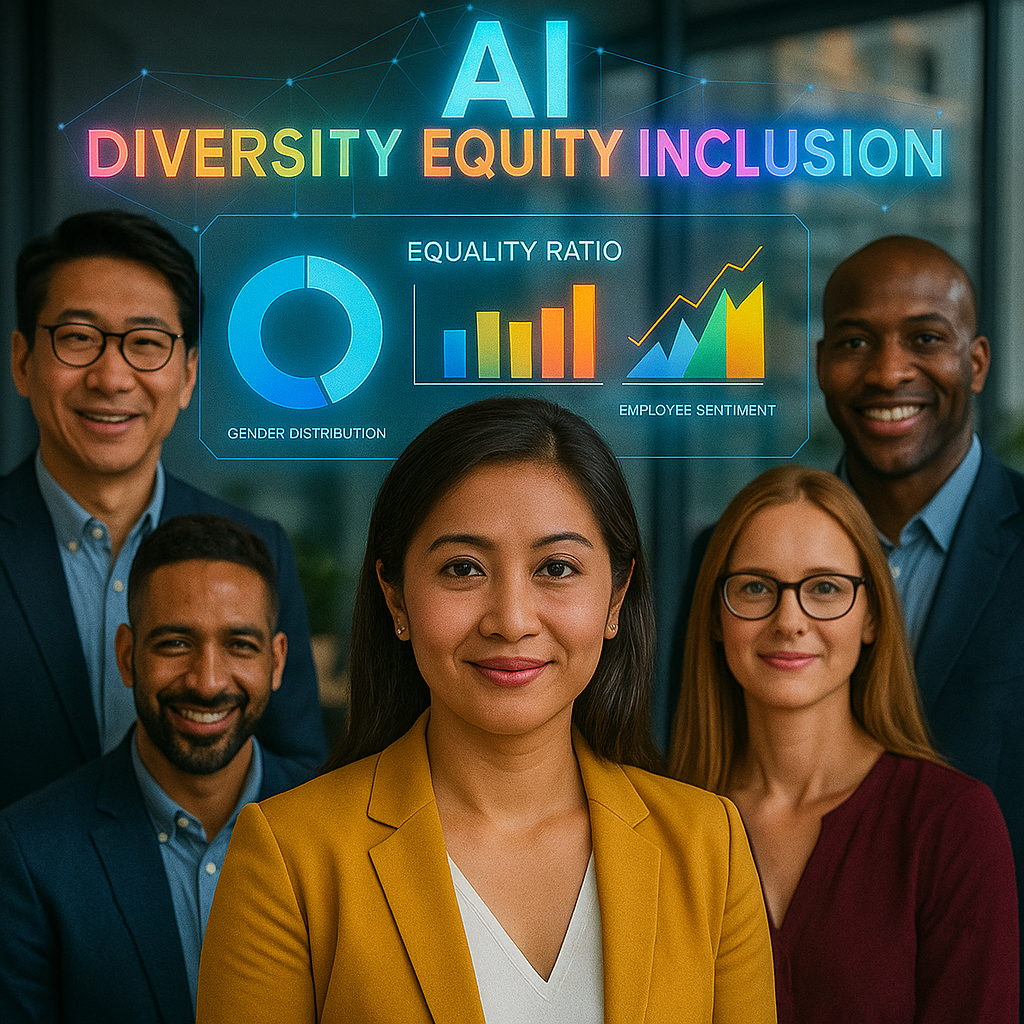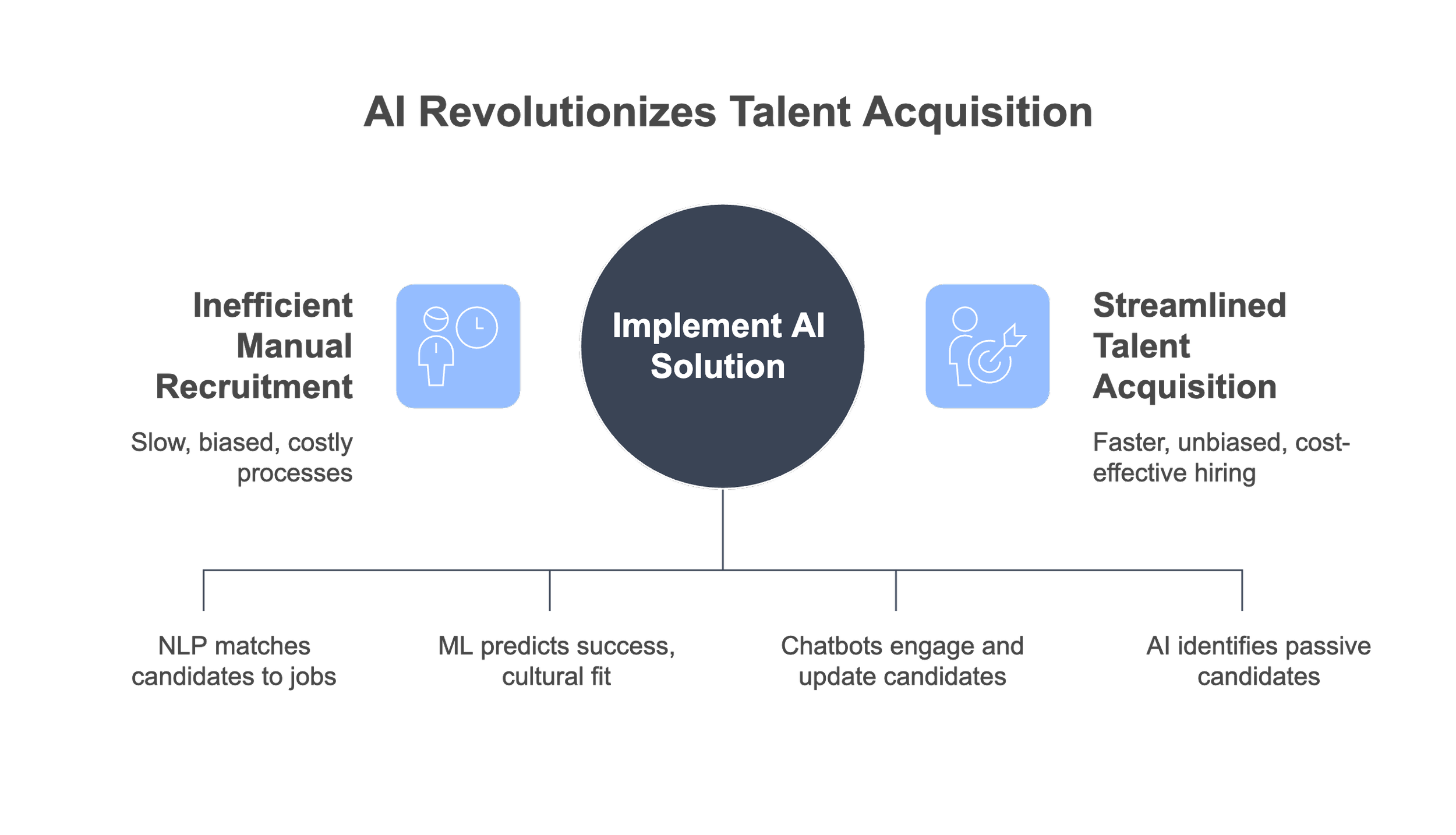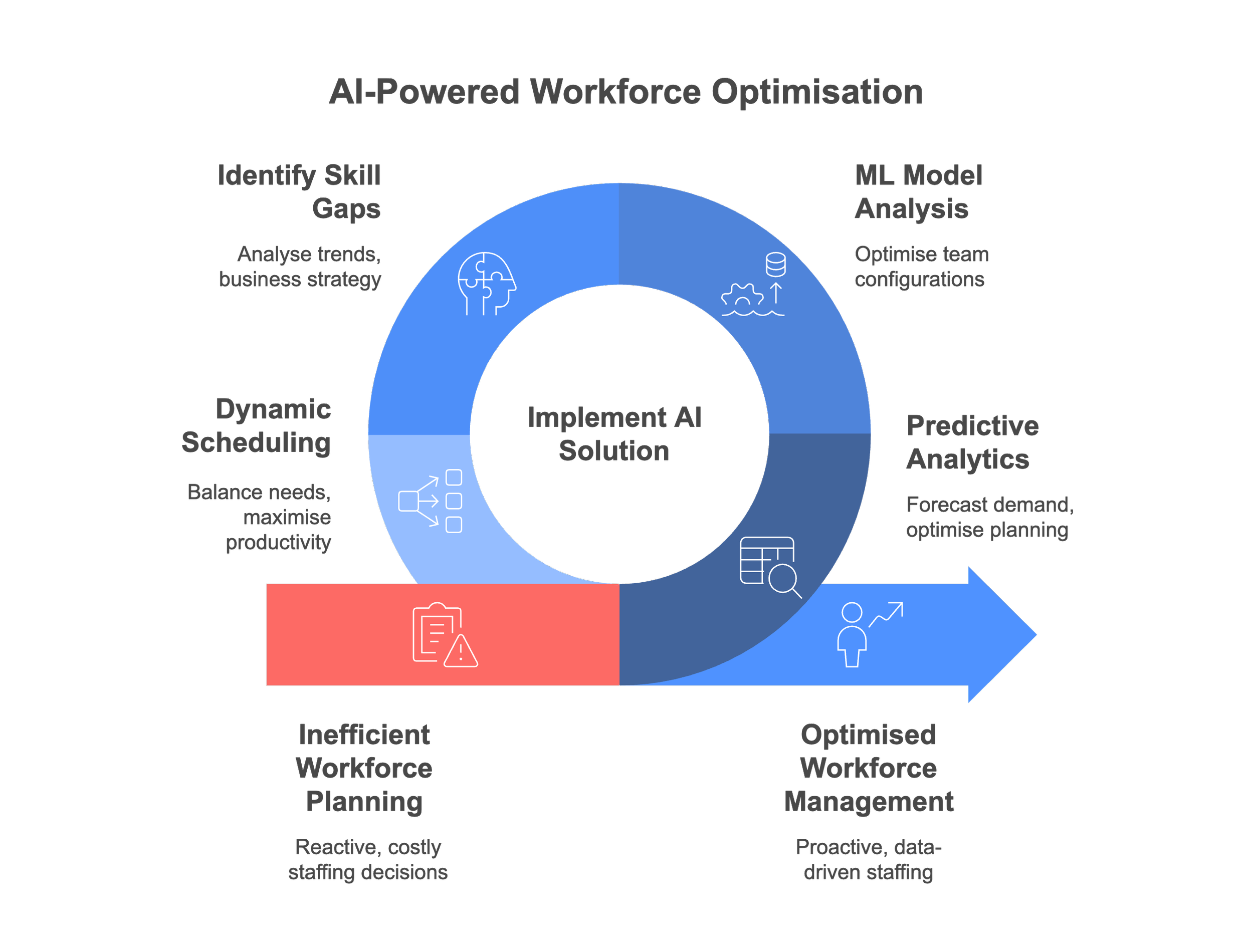
Optimise Human Resources
Accelerate HR Innovation Today

Talent Optimisation That Makes People Your Ultimate Advantage
Human Resources manages your organisation's most valuable asset—its people. This capability spans talent acquisition, development, engagement, and retention across the entire employee lifecycle. Success requires attracting top talent, developing capabilities, and creating cultures where people thrive.
AI transforms HR from administrative overhead into strategic talent optimisation that builds winning teams.
These six proven scenarios demonstrate how digibus.ai specialists enable you to transform talent management through AI recruitment, predictive retention, and intelligent workforce planning—enabling you to significantly reduce hiring time and employee turnover.

Ready to Make People Your Greatest Competitive Advantage?
Your talent strategy shouldn't be guesswork. digibus.ai transforms HR into a strategic capability that attracts top talent, develops high performers, and predicts what your workforce needs before they know it themselves.
People Strategy Results:
Faster Hiring: Find the right talent quickly
Reduction in Turnover: Keep your best people engaged
More Effective Training: Personalised development that works
Your Talent Advantage:
AI-powered recruitment that finds perfect matches
Predictive analytics that prevent talent loss
Personalised development that accelerates growth
Data-driven insights that guide people decisions
Make Talent your Unfair Advantage
AI-Powered Talent Acquisition and Candidate Matching
AI revolutionises recruitment by automatically sourcing, screening, and ranking candidates whilst eliminating bias and reducing time-to-hire through machine learning algorithms that analyse job requirements and historical hiring data.
CHALLENGE WITHOUT AI
Traditional recruitment processes are manual, time-intensive, and often biased whilst recruiters spend excessive time screening unqualified candidates, leading to extended time-to-hire periods.
AI SOLUTION OPPORTUNITY
Natural language processing analyses resumes and job descriptions to automatically match candidates whilst machine learning models predict candidate success probability and cultural fit automatically.
IMPACTED CAPABILITIES
Recruitment and Selection, Candidate Experience Management, Workforce Planning, Diversity and Inclusion, Employer Branding, Talent Pipeline Development capabilities are enhanced through intelligent recruitment.
TANGIBLE BUSINESS BENEFITS
Recruitment efficiency: Reduction in time-to-hire, decrease in screening costs, and significant improvement in quality-of-hire metrics through automated candidate evaluation processes.
Diversity enhancement: Increase in diverse candidate pools, improvement in candidate experience scores, and reduction in first-year turnover through better candidate matching.
Cost optimisation: Cost-per-hire decreases whilst recruitment team productivity increases substantially, allowing focus on strategic relationship building and employer branding initiatives.
Predictive Employee Retention and Engagement Analytics
AI analyses multiple data sources including performance metrics, engagement surveys, and behavioural patterns to predict flight risk and recommend targeted retention interventions.
CHALLENGE WITHOUT AI
Employee turnover is typically identified reactively when resignation notices are submitted whilst traditional engagement surveys provide limited insights and lag indicators.
AI SOLUTION OPPORTUNITY
Predictive analytics models combine HR data, performance metrics, collaboration patterns, and external market signals to identify at-risk employees months in advance.
IMPACTED CAPABILITIES
Employee Engagement, Retention Management, Performance Management, Career Development, Compensation Planning, Succession Planning capabilities are enhanced through predictive analytics.
TANGIBLE BUSINESS BENEFITS
Retention improvement: Reduction in unwanted turnover through predictive interventions whilst early identification enables proactive retention strategies that cost significantly less than replacement.
Engagement enhancement: Employee Net Promoter Scores improve significantly when AI-driven insights inform management actions whilst organisations save substantially by retaining key talent.
Management effectiveness: Management effectiveness increases as leaders receive actionable insights about team engagement and retention risks through intelligent performance monitoring.
Personalised Learning and Development Pathways
AI creates individualised learning experiences by analysing employee skills, career goals, performance data, and business needs to recommend optimal development opportunities.
CHALLENGE WITHOUT AI
Traditional training programmes offer one-size-fits-all approaches that waste resources whilst employees struggle to identify relevant learning opportunities that align with career aspirations.
AI SOLUTION OPPORTUNITY
AI-powered learning platforms assess individual skills through multiple data sources whilst machine learning algorithms recommend personalised learning paths that balance individual goals with organisational requirements.
IMPACTED CAPABILITIES
Learning and Development, Skills Management, Career Pathing, Performance Management, Succession Planning, Talent Mobility capabilities are enhanced through personalised development programmes.
TANGIBLE BUSINESS BENEFITS
Training effectiveness: Improvement in training effectiveness and reduction in skill gap closure time whilst personalised learning increases completion rates compared to traditional programmes.
Employee engagement: Employee engagement in development activities improves significantly whilst internal mobility increases as employees develop relevant skills for advancement opportunities.
Business alignment: Training ROI improves substantially with targeted interventions that address specific business skill requirements and reduce external hiring needs.
Intelligent Workforce Planning and Optimisation
AI analyses business demand patterns, employee capabilities, and external factors to optimise workforce allocation, predict staffing needs, and recommend strategic workforce decisions.
CHALLENGE WITHOUT AI
Traditional workforce planning relies on historical data and manual forecasting whilst organisations struggle with over-staffing during slow periods and under-staffing during peak demand.
AI SOLUTION OPPORTUNITY
Predictive analytics combines business forecasts, seasonal patterns, project demands, and external market data to optimise workforce planning whilst machine learning models analyse employee skills.
IMPACTED CAPABILITIES
Workforce Planning, Resource Allocation, Skills Management, Scheduling and Deployment, Strategic Planning, Budget Management capabilities are enhanced through intelligent workforce optimisation.
TANGIBLE BUSINESS BENEFITS
Cost optimisation: Intelligent workforce planning reduces labour costs through optimal resource allocation whilst overtime costs decrease through better demand prediction.
Employee satisfaction: Employee satisfaction improves with more predictable schedules and better work-life balance whilst strategic workforce decisions become more accurate.
Resource efficiency: Real-time visibility enables intraday workforce management whilst organisations report reduction in average workforce while maintaining service levels.
Automated Payroll and Employee Services Processing
AI streamlines administrative HR processes by automating payroll calculations, benefits administration, expense processing, and employee inquiries whilst reducing errors and processing time.
CHALLENGE WITHOUT AI
Manual payroll and benefits processing is time-intensive and error-prone whilst employee inquiries about policies create high-volume workloads for HR teams.
AI SOLUTION OPPORTUNITY
Robotic process automation handles routine payroll calculations whilst natural language processing chatbots provide employee support and machine learning models detect payroll anomalies automatically.
IMPACTED CAPABILITIES
Payroll Administration, Benefits Management, Employee Self-Service, Compliance Management, Document Processing, Employee Communications capabilities are enhanced through comprehensive automation.
TANGIBLE BUSINESS BENEFITS
Processing efficiency: Processing costs decrease for routine transactions whilst error rates approach zero and payroll close cycles shrink significantly.
Service improvement: Employee inquiries to HR decrease significantly as self-service capabilities expand whilst compliance accuracy improves through automated monitoring.
Resource reallocation: HR teams redirect time from administrative tasks to strategic initiatives that drive business value and employee engagement through automation.
Data-Driven Diversity, Equity, and Inclusion Analytics
AI analyses hiring, promotion, compensation, and engagement data to identify bias patterns, measure DEI progress, and recommend interventions that create more equitable workplace experiences.
CHALLENGE WITHOUT AI
Traditional DEI initiatives lack comprehensive data visibility whilst unconscious bias in hiring and promotion decisions persists despite good intentions.
AI SOLUTION OPPORTUNITY
Machine learning algorithms analyse hiring, promotion, and compensation data to identify statistical disparities whilst natural language processing examines performance reviews for biased language.
IMPACTED CAPABILITIES
Diversity and Inclusion Management, Compensation Management, Performance Management, Recruitment and Selection, Promotion and Advancement, Employee Experience capabilities are enhanced through data-driven insights.
TANGIBLE BUSINESS BENEFITS
Diversity improvement: Measurable improvements in diversity representation with increases in underrepresented groups in leadership positions whilst pay equity gaps are identified more quickly.
Employee engagement: Employee engagement scores improve among diverse populations when bias interventions are implemented whilst employer brand strength increases significantly.
Organisational performance: DEI programme ROI becomes measurable through improved retention, innovation metrics, and market performance indicators whilst reducing legal risks.


